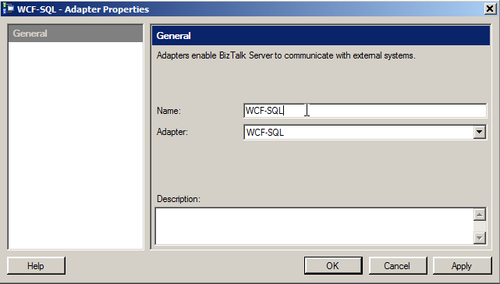Inbound operations
To access adapter
properties for the inbound scenarios, we have to navigate to the
appropriate receive location and double-click it to bring up the Receive Location Properties window. Then click OK to open the WCF-Custom Transport Properties multi tab dialog.
The General tab offers us the Address (URI) text control to set or modify connection string:
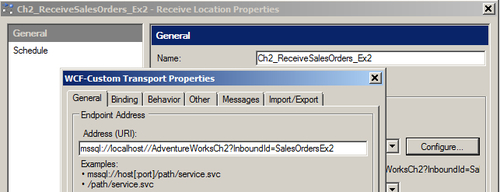
The Bindings tab, as its name suggests, is where we can get access to the binding properties:
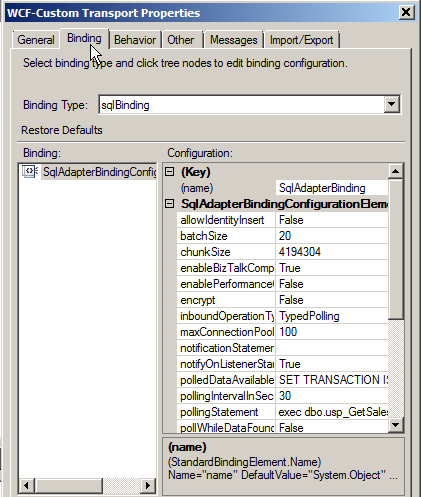
The tab named Other is used to specify credentials to access the target database:
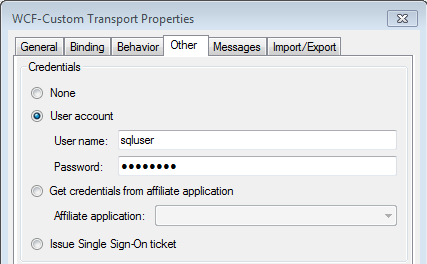
We can employ the following options to specify credentials:
None the adapter will use Windows authentication and the identity of the account Receive Handler host instance is running under
User account this option allows specifying user name and password to connect to the target database with SQL Server authentication mode
Get credentials from affiliate application allow specifying a Single Sign-On affiliate application to get the credentials from
In the majority of cases you won't need to deal with the configuration options provided by the Behavior, Messages, and Import/Export tabs. If it is still necessary, please refer to the WCF-Custom adapter documentation.
Outbound operations
The configuration procedure for
the outbound scenarios is essentially the same as for the inbound. You
have to locate the appropriate send port, double-click it to open the Send Port Properties window, and then click the Configure button to open the WCF-Custom Transport Properties window. The General tab provides you access to the URI connection string and also to the SOAP actions.
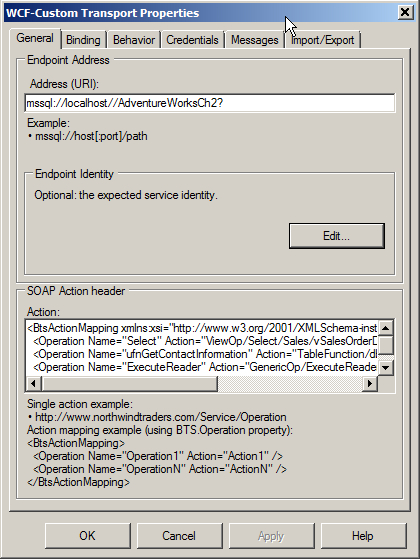
The Credentials tab as you can guess allows you to provide credentials to access the database:
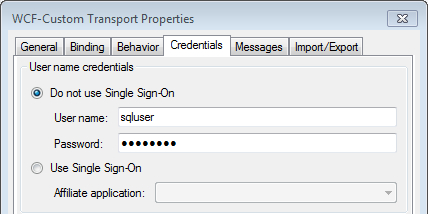
Available options are:
Do Not Use Single Sign On
the adapter will connect to the database using Windows authentication
and the Send Handler account identity if the User name and Password
fields are blank. Otherwise the adapter will use SQL Server
authentication with the credentials specified in the User name and
Password controls.
Use Single Sign On allows the selection of a Single Sign On affiliate application to provide the credentials.
As with the receive locations, the properties presented on the General, Bindings, and Credentials
tabs cover the majority of configuration scenarios. For complex
situations, please refer to the WCF-Custom adapter documentation.
WCF-SQL vs. WCF-Custom adapter
Besides WCF-Custom, the
sqlBinding representing the ASDK SQL adapter can also be accessed
through the dedicated WCF-SQL BizTalk adapter installed with the BizTalk
Server 2010 Adapter Pack. The difference between these adapters is the
WCF-SQL adapter offers a bit more intuitive UI tailored specifically for
the sqlBinding. For example, by clicking Configure on the General
tab of the dedicated WCF-SQL adapter we can populate a table to build a
connection string, while with generic WCF-Custom we have to type in the
entire string directly as you just have seen in the previous section.
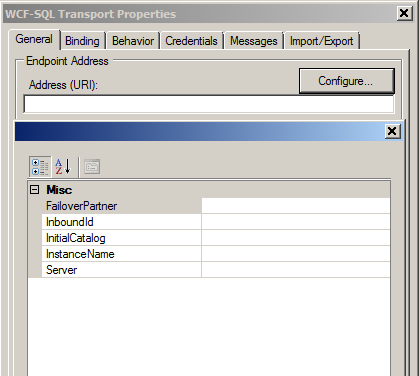
To create the WCF-SQL adapter we need to perform the following steps in the BizTalk Admin Console:
Right mouse click on Adapters and then select New Adapter.
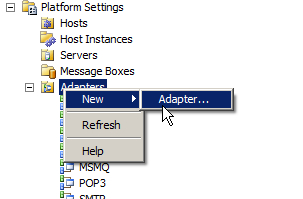
Click the Adapter drop-down list and select WCF-SQL. In the Name text box, type in WCF-SQL and click OK button:
